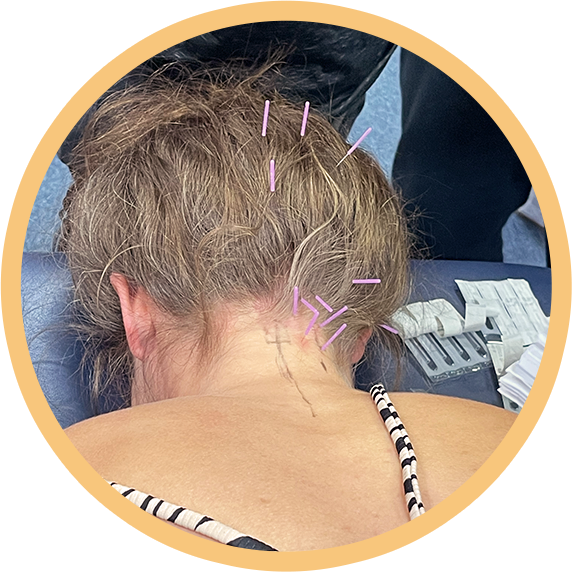Dry Needling
Innovative Physical Therapy and Fitness Center offers the most advanced and Innovative Dry Needling Treatment options to our patients at all our facilities. Please see below to know more about Dry needling and how it can help you.
What Is Dry Needling?
Dry needling sometimes referred to as “Intramuscular Stimulation or Intramuscular Manual Therapy” is a treatment using thin filiform needles to relieve muscular pain and improve movement. Dry needling benefits are it treats dysfunctions in skeletal muscle, fascia, and connective tissues. Needles are placed in myofascial trigger points, taut bands of skeletal muscle located within a larger muscle group.

Conditions that can Benefit with Dry Needling Intervention
- Achilles Tendonitis/Tendinosis
- Arthritis
- Back pain
- Carpal Tunnel
- Chronic pain
- Complex Regional Pain Syndrome
- Disc pathology
- Headaches/Migraines
- Hip and Gluteal pain
- Joint Dysfunction
- Knee pain
- Ligament Strains
- Muscular Strains
- Neck pain
- Nocturnal cramps
- Pelvic pain
- Phantom pain
- Plantar Fasciitis
- Post-herpetic neuralgia
- Sciatica
- Shoulder pain
- Spinal Dysfunction
- Tendonitis
- Tennis/Golf Elbow
- Trauma
- Whiplash disorders
Dry Needling FAQ
How is Dry Needling Different From Acupuncture?
Dry needling and acupuncture are two very different treatments when it comes to their purpose. The only commonalities dry needling and acupuncture have, are they both use thin, stainless steel needles inserted into the skin to relieve pain. The difference between these two therapies is that acupuncture is about releasing a person’s energy flow (or chi) along meridians, while dry needling is used to stimulate “triggering points” and relieve pain in neuro-muscular systems.
How does Dry Needling help with pain?
Dry needling helps with increasing range of motion in joints, relaxing tight muscles, improving blood flow, reducing pain, improving strength, and can also speed up the recovery process from an injury.
How does Dry Needling work?
Physical Therapist Practioners use filiform needles which are fine, short, stainless steel needles that are disposable and are usually 0.16 mm – 0.3 mm thick and 1.5 cm – 6 cm long in size.
They will stay in the skin anywhere from 10 to 30 minutes. When placing a needle in a “trigger point” or muscular knot the common reaction that patient gives is a twitch. After a person briefly twitches, muscle fibers in the area will relax, and inflammation will decrease.
The Physical Therapist can feel around with the needle and get an idea of the quality of the tissues the needle is penetrating. When a needle enters the skin, is the body releases cytokines, substance P and CGRP (Calcitonin Gene Related Peptide). Where the needle penetrates the skin, the body releases CGRP, which causes a cascade of reactions resulting in vasodilation, increased blood vessel formation, and increased tissue repair. This causes injury signals to be sent to the brain, creating a series of events to replace or repair damaged tissue with healthy tissue.
Most of the patients will notice decreased pain and improved mobility within 24 hours.
How Safe is Dry Needling? Are there any side effects?
When done by a properly educated, trained, and experienced practitioner or physical therapist, dry needling is generally a safe treatment option. A well-trained practitioner will use clean, individually packaged, single use, sterile needles, and always disinfect the needled area before proceeding.
Some possible side effects that can occur include muscle soreness, rare cases of fatigue, dizziness, or possibly bruising. Drowsiness or dizziness only occurs in 1-3% of patients, bruising and bleeding occurs in 15-20%, and temporary pain during occurs in 60-70% of patients. Make sure to discuss any side effects with your Physical Therapist.
- Kendall Park
- Edison
- Princeton
- Old Bridge
- Monroe
